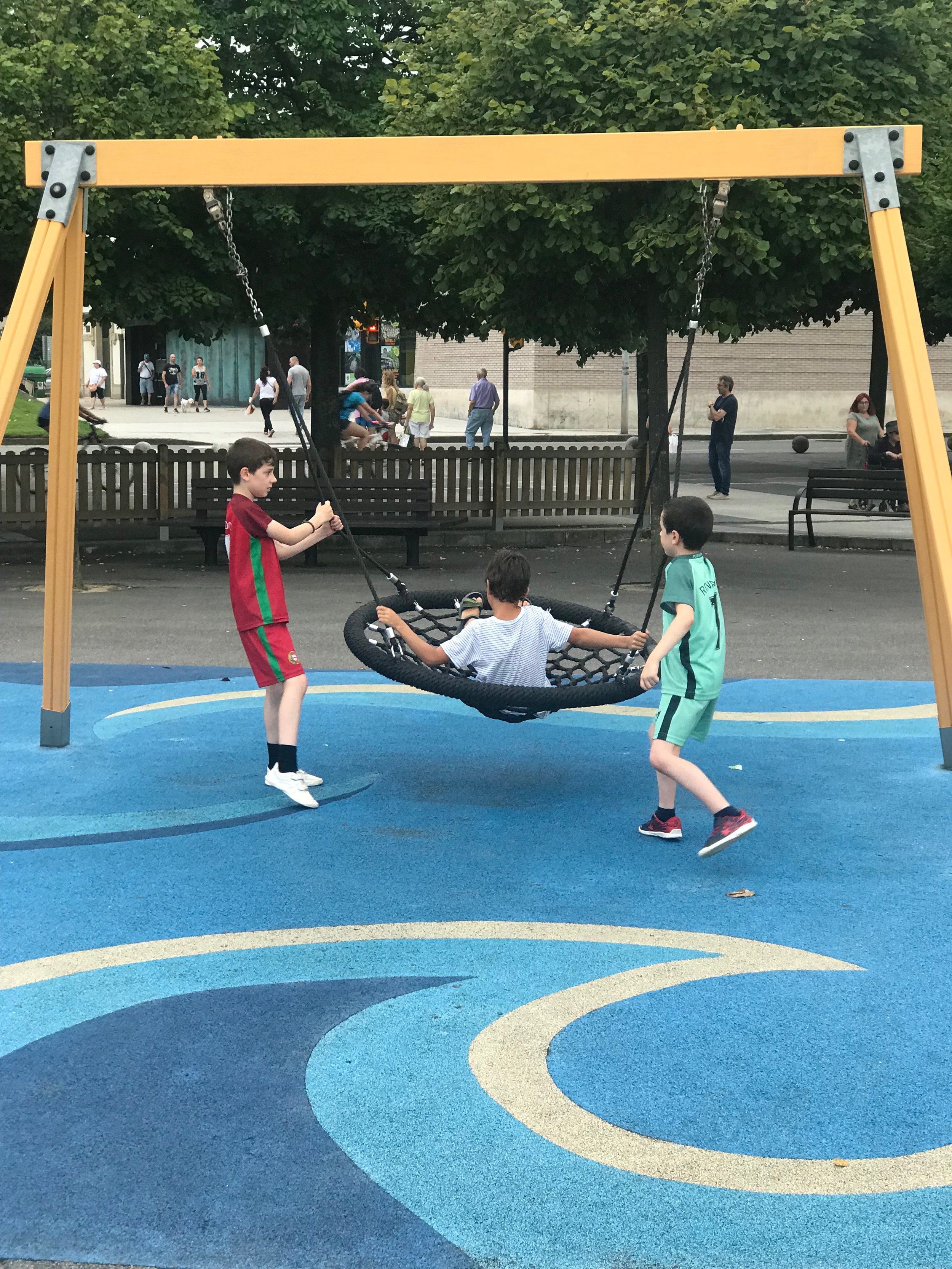So beautiful in this diminishment.
When I was a boy--maybe 7 or 8--I got into trouble with my parents for wandering around an abandoned factory near where we lived. "Don't you ever go back there, again," my mother said, "it's dangerous." And I'm sure it was, but isn't it the nature of young boys to engage in imaginative adventures within such settings, fighting dark forces within the shadows of hulking structures?
As I've gotten older I have realized that I have always been drawn to abandoned buildings, towns, amusement parks, hospitals, schools, highways, train tracks, or the like. I'm fascinated by the stories they hold within their bricks, concrete, steel, and by the people I imagine to have built them, lived within them, labored and played around them.
And it's not just inanimate structures. Even when I was little, my heart was attracted to elderly people (or at least I thought they were old at the time), especially if their bodies were shells of what they once were. Perhaps it was because I grew up with some uncles and aunts who suffered years-long illnesses, and I heard many stories of how different they were when they were young. Even as I age myself, I look upon elders who struggle to walk, and imagine them as their younger selves, full of promise and unable to dream that their lives would be so physically curtailed in later years. And weird as this may sound, I often look upon young women and men and project how time will re-shape their faces and bodies, and probably their hearts.
There is something so beautiful in this diminishment that is all around us, inevitable within and without ourselves. There is even grace in it.
The last few days journey have covered contrasting landscapes and cityscapes. One day of walking through idyllic hills ended in a medieval village--once called "the most beautiful village in Spain" by the philosopher John-Paul Sartre---now a bit of a beautiful tourist trap. Apparently only 20 years ago, cows filled the ground floor of local homes, which now house souvenir shops all selling the same wares. I got up early in the morning to see what it was like before the buses arrived, disgourging sightseers onto its cobblestone streets. It was easier then to imagine its inhabitants of 600 or 700 years ago struggling to tame the forces of nature for essentials of survival.
The end of another day's walk brought me to the very large and modern city of Gijon, its own ancient history buried under its renewal during the industrial revolution of the last century. As I strolled on the wide beachfront plazas, I was taken by the life that continues on in the place, generation after generation, often unaware of all that has come before it.
The guidebook that I have been following warned me of the route ahead outside of Gijon. "First, the bad news. This is probably the least enjoyable stage of walking on the Camino del Norte. The departure from Gijon passes through an ugly industrial district...".
And yes, it was, as advertised, a route through a somewhat dreary landscape of huge factories, with smokestacks belching unknown fumes, and the air filled with sounds of hissing, humming and whirring originating within the hulking behemoths I was passing. In some ways, it felt as though I was witnessing the end of an era. Like the physique of an old man, the buildings looked stained, tired, and in need of life support. But still they functioned.
And one in particular fascinated me. It was huge, stretching over acres and acres, probably a good kilometer or two of the Camino that I was traveling. What was its output, I wondered, what could it possibly be producing--and with what efficiency--that would generate a profit for its owners? As I neared its central focus, I was astonished to see that it was recycling metal from crushed squares of what I assumed were automobiles or other items we consume and then discard in sometimes shockingly short order. Of course(!), I thought, and I suddenly looked upon its aging face with gratitude for the grace of its existence. Here, an example of the circle of life, of which we too are a part, our bodies ultimately recycled back to the Source after serving our purpose.
There is a unity to all of this, all of us. Generation after generation, new construction to abandoned shell to regeneration, spirits rising and falling and rising again, and hovering over it all is some kind of holy love, drawing out of each cycle an advancement towards a final union with the Source that lives within every atom of everything that is.
"Love is the only force which can make things one without destroying them. … Some day, after mastering the winds, the waves, the tides and gravity, we shall harness for God the energies of love, and then, for the second time in the history of the world, man will have discovered fire."
This quote is from Pierre Teilhard de Chardin, who was a French Jesuit priest, philosopher and paleontologist who was present at the discovery of Peking Man. His writings on evolution and on the compatibility of science and theology were condemned by the Church during his lifetime, but have since been embraced even by Pope Benedict XVI.
The world we travel through in our lifetimes is filled with God's grace. Abandoned buildings and abandoned bodies are ultimately part of the cycle that is sometimes beyond our comprehension. But they (we) represent the Love that for a while keeps our hearts beating, our lungs breathing, and our bodies building structures that attempt to master the wind, the waves, the tides and gravity. May we remember the Source of all that is good in us, and in the world.













